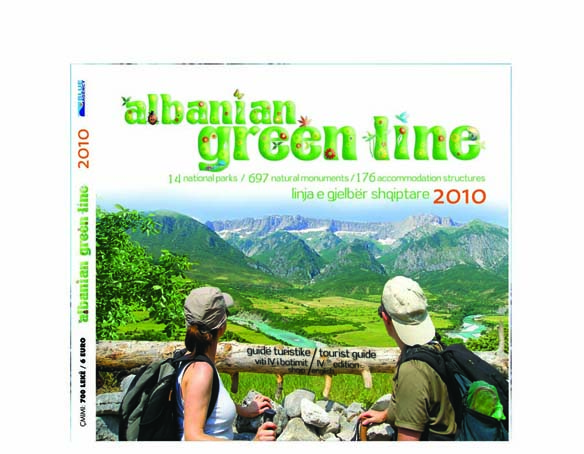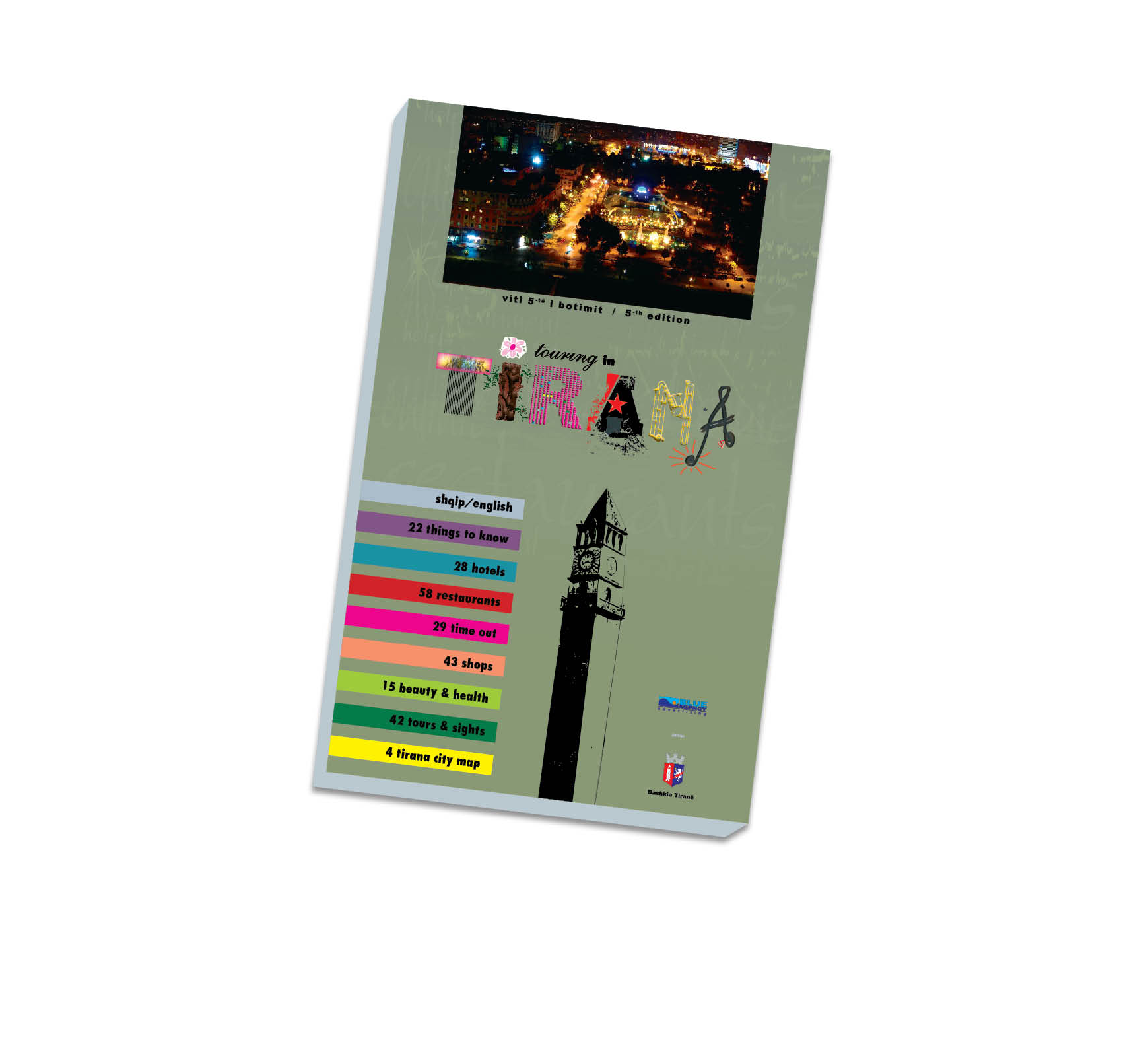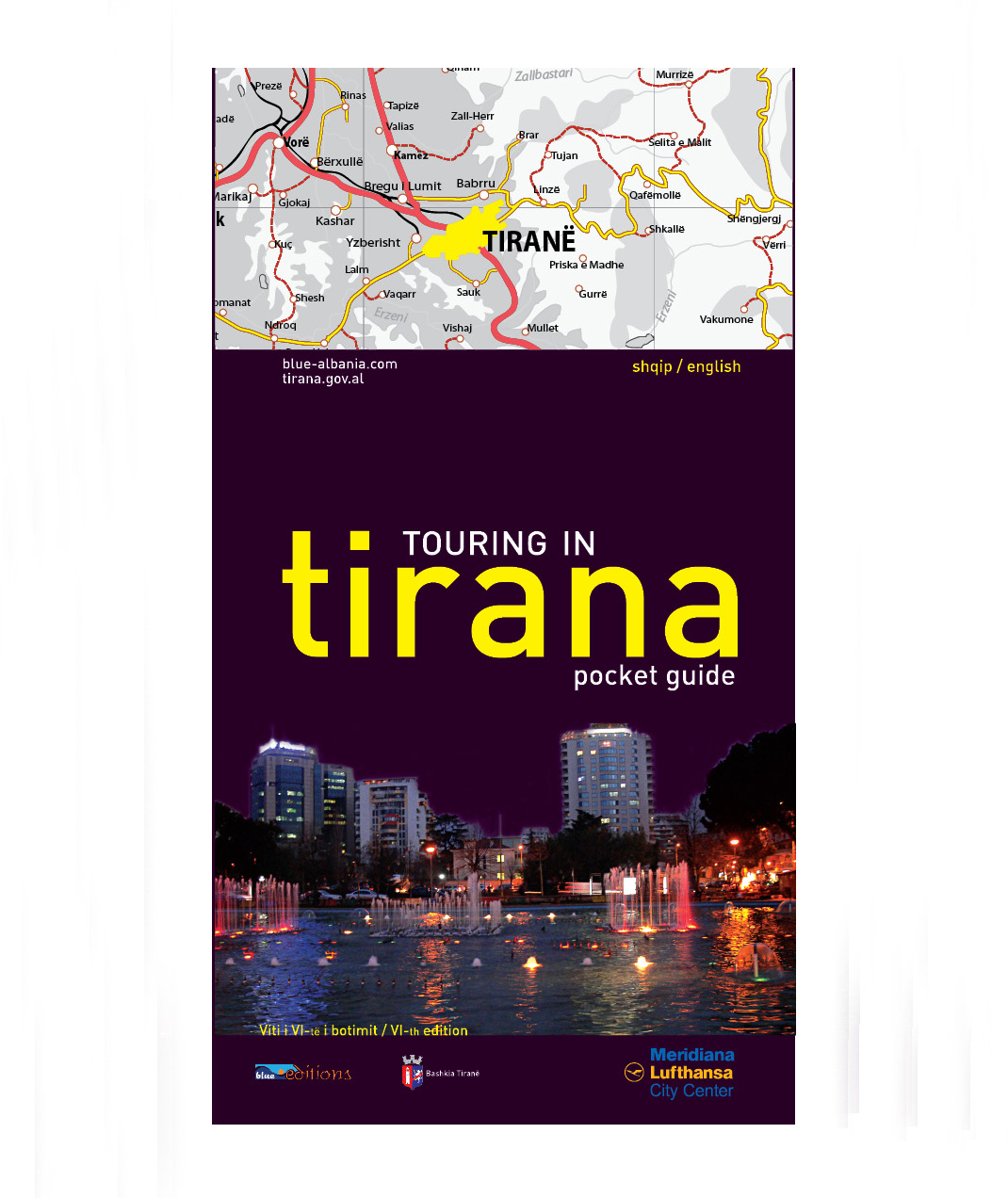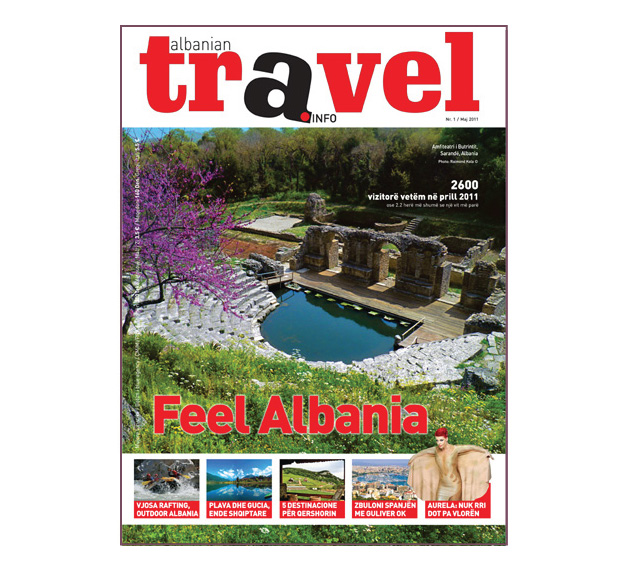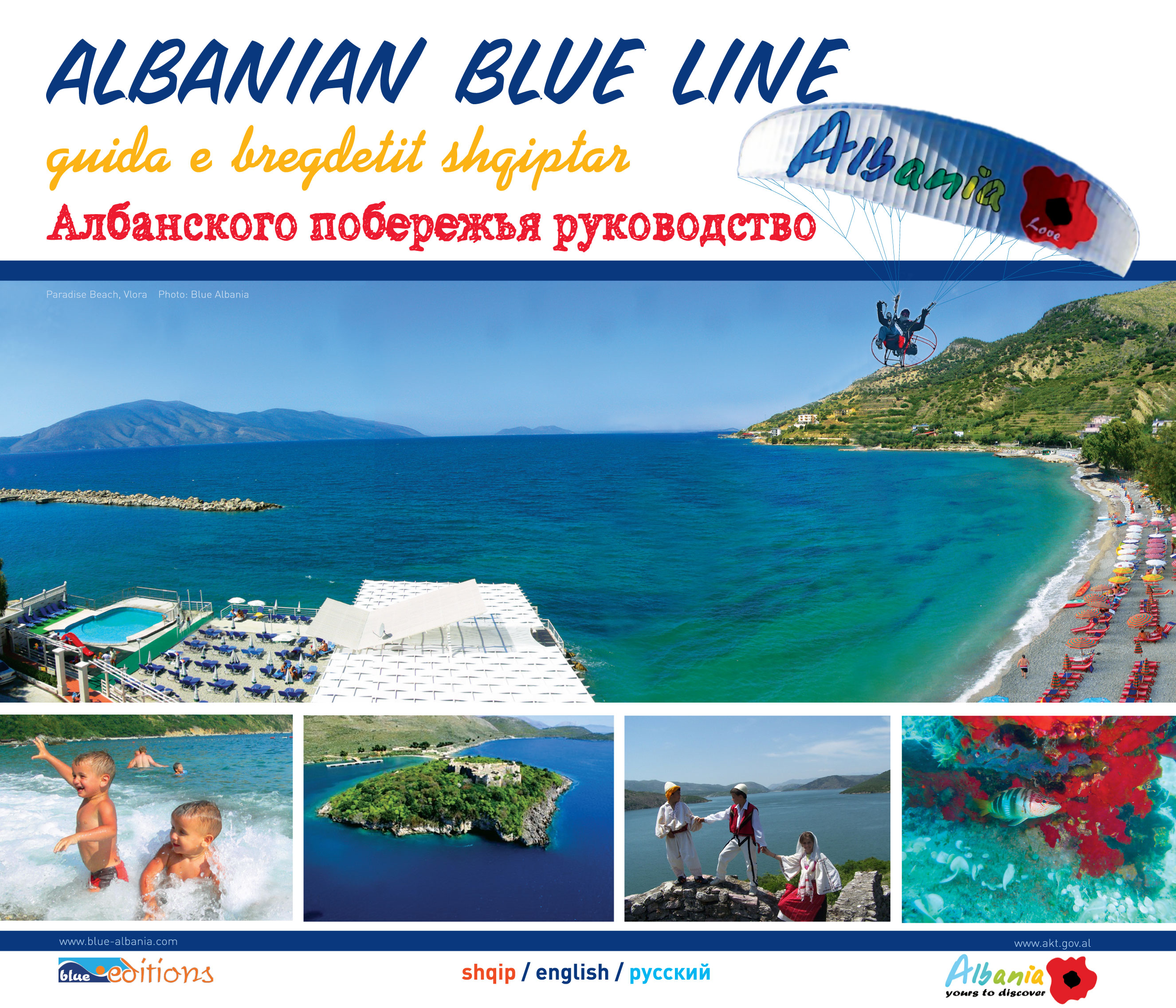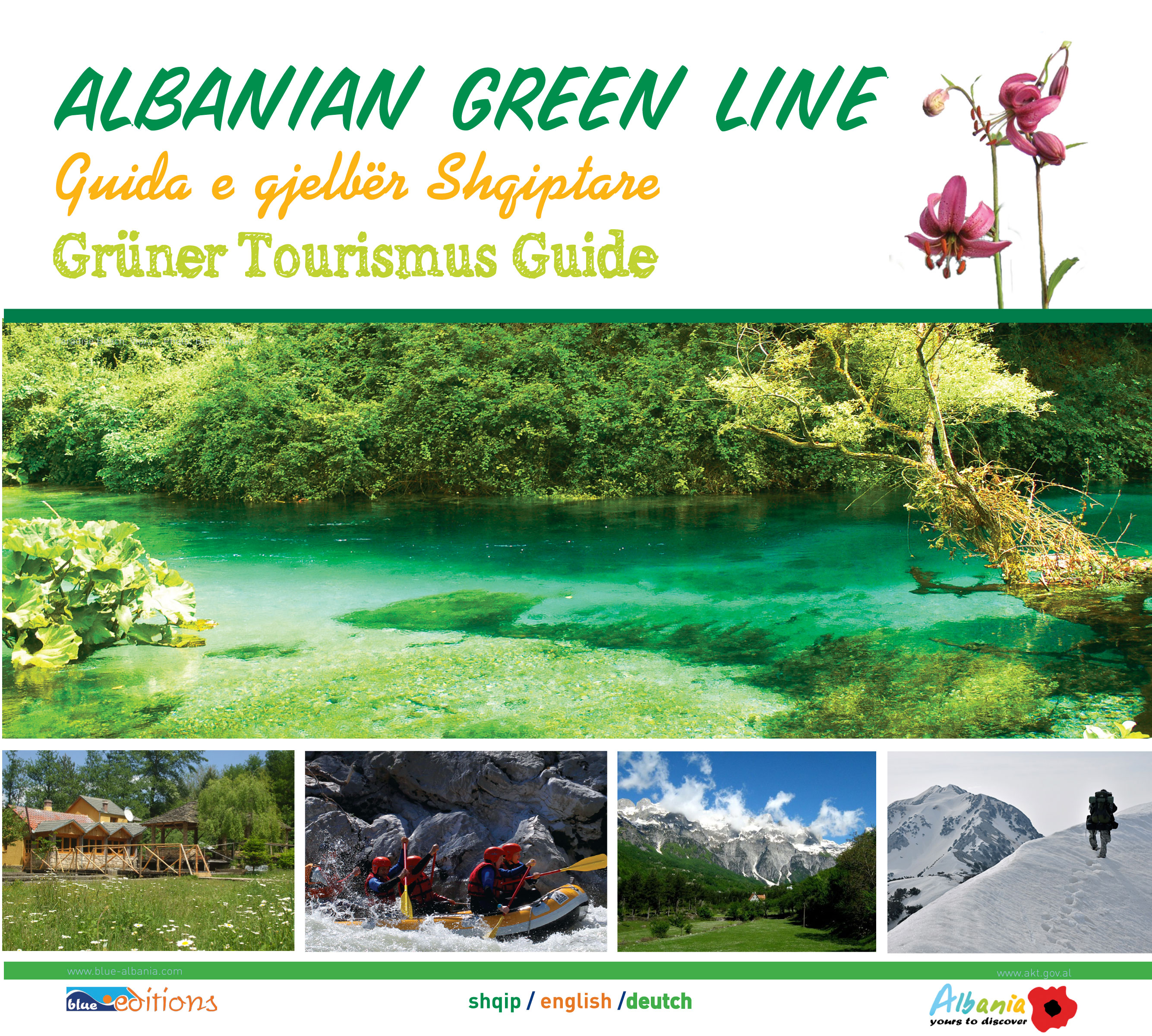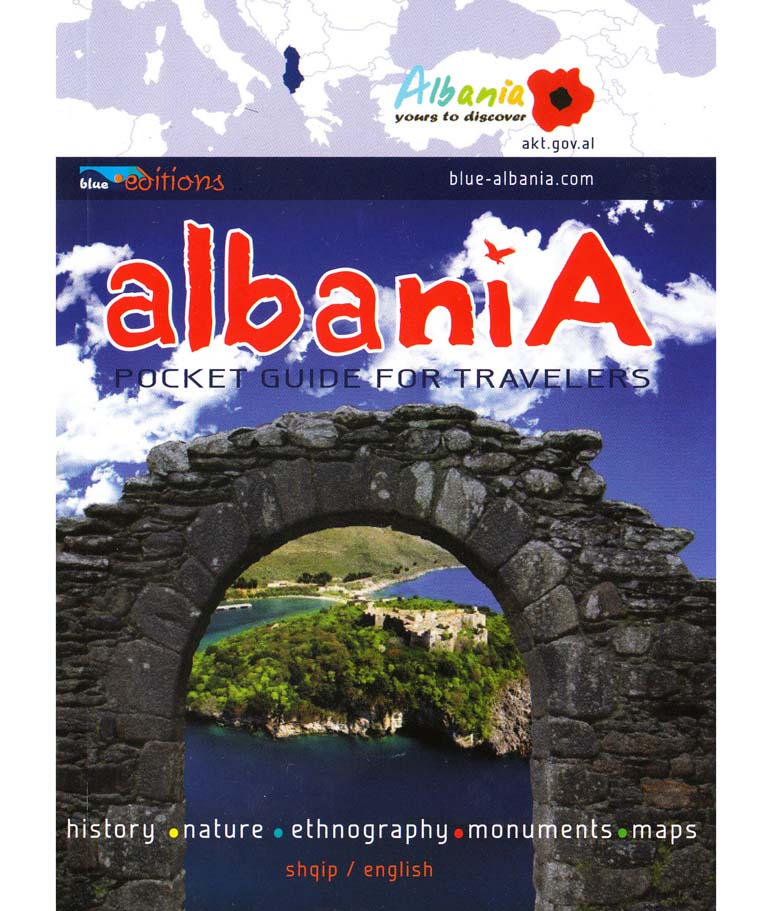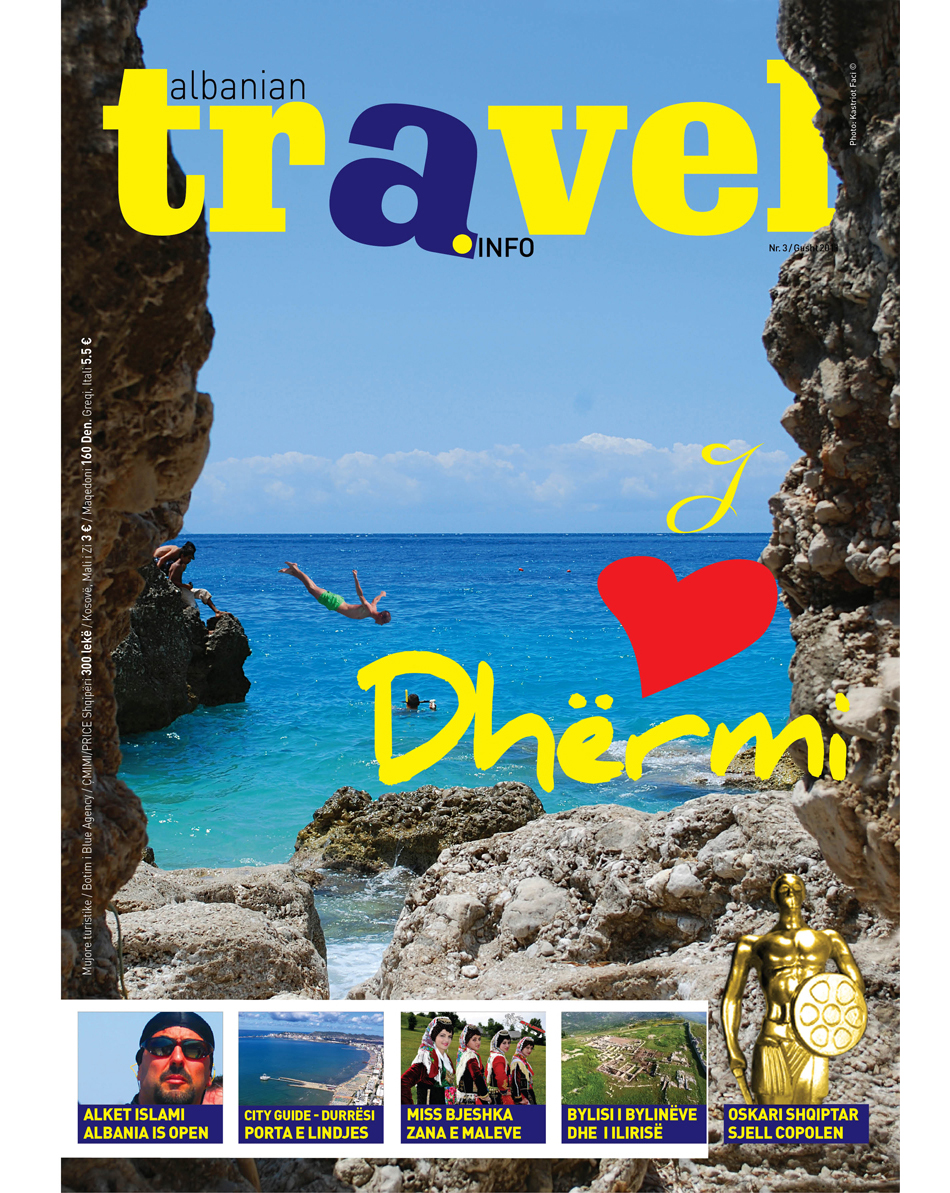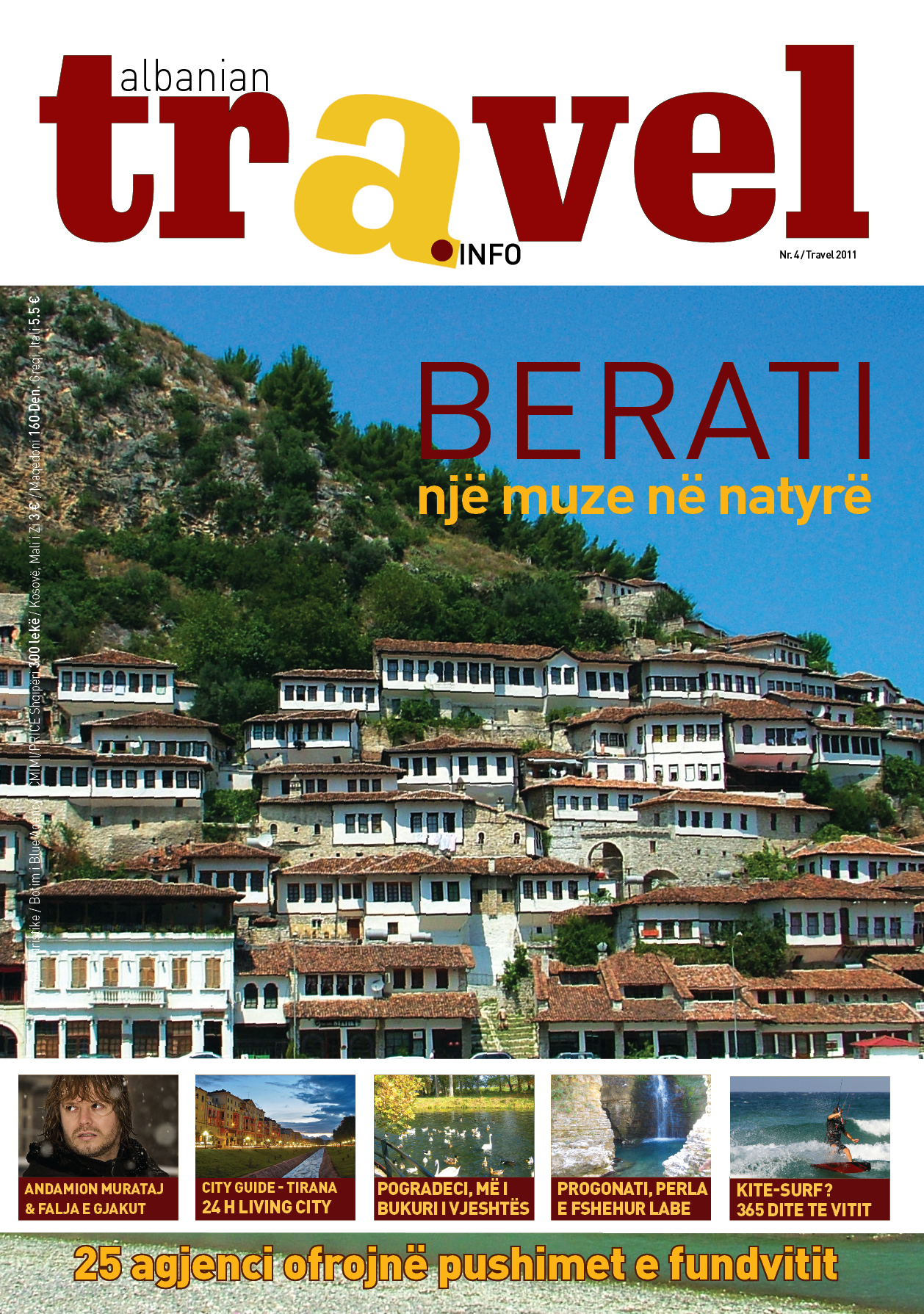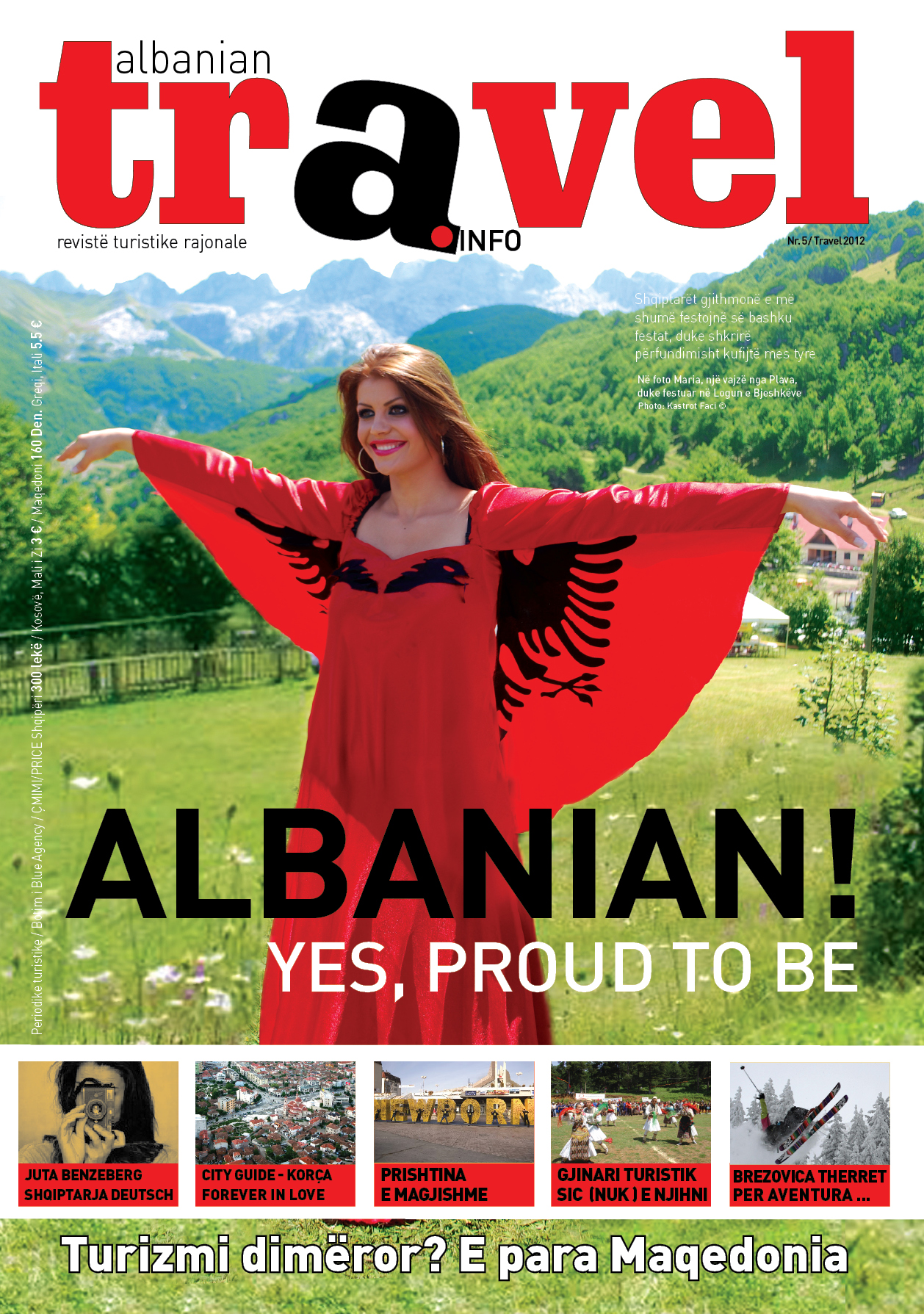Berati General Info
.jpg)
Berati belongs to that kind of city where the life goes on from the deepness of the antiquity, until the present day. Because of the strange impression of the two characteristic quarters, Mangalem and Gorica, Berati is known as “the city of one over another windows” It is unclear whether it really means "Thousand" (një mijë) or "One over Another" (një mbi një) windows. Indeed, the quarter is built in a very steep place and windows seem to be one over another. Same views can be admired also in Gjrokastër (Albania) and Catanzaro (Italy) where once an Albanian minority lived
The archaeological attestations narrow that at VII-VI b.C., here has been constructed an inhabitancy civilization with a real social life, composed by manufactories at the line of the legends and history, they narrow that this inhabitancy has been the ancient Orestiada called so from a tribe of pellazgs (Albanian tribe). The lider of this tribe was Orest, the son of Agamemnon.
History
The town is thought to be one of the oldest in Albania, with a settlement having existed there since at least the 6th century BC, when it was a fortress-settlement of the Ancient Greek tribe of Dassaretae. The founder of the town may have been the King of Macedon, Cassander who named it after his father Antipater, at 314 BC. Known as Antipatrea, it was captured by the Romans in the 2nd century BC. Livy (31.27.2) describes Antipatrea as a strongly fortified city in a narrow pass that the Romans sacked and burned. The town became part of the unstable frontier of the Byzantine Empire following the fall of the Roman Empire and, along with much of the rest of the Balkan peninsula, it suffered from repeated invasions by Slavs and other "barbarian" tribes. During the Byzantine period, it was known as Pulcheriopolis.The Bulgarians under Simeon I captured the town in the 9th century and renamed it "Beligrad" (White City).They were eventually driven out in the 11th century. During the 13th century, it fell to Michael I Ducas, the ruler of the Despotate of Epirus.
Latter in the 13th century Berat again fell under the control of the Byzantine Empire. In 1280-1281 the Sicilian forces under Hugh the Red of Sully laid siege to Berat. In March 1281 a relief force from Constantinople under the command of Michael Tarchaneiotes was able to drive off the besieging Sicilian army. It passed to the Serbs in 1345.
The Ottoman Empire conquered it in 1450 after the siege of Berat and retained it until 1912. However, it did not retain direct control for the whole of this period – in 1809, the tyrannical Ali Pasha, who was himself of Albanian origins, seized the town and refortified it. In 1867, Berat became a sanjak in Janina (Yanya) vilayet. During Ottoman rule, she was known Arnavut Belgrad? in Turkish) at first, after Berat.
During the early period of Ottoman rule, Berat fell into severe decline. By the end of the 16th century it had only 710 houses. However it began to recover by the 17th century and became a major craft centre in the Ottoman Balkans specializing in wood carving. During the 19th century, Berat played an important part in the Albanian national revival. It became a major base of support for the League of Prizren, the late 19th century Albanian nationalist alliance.
Geographic position
Berati is built in a favorable geographic position, which gives the possibility to get connect with numerous cities in Albania. Actually Berat has only one exit on the national road, which connects it with Lushnja and goes on to Fier-Vlore and Durres-Tirane. The construction of other segments would give to Berat higher values for the utilization of its tourist resources.
Climatic conditions
Berati has soft climate, with wet winter and dry hot summer. During spring and autumn, you may be lightly dressed because of the warm weather but keep a sweeter in case of freshness of the morning or evening. Have present that the rain is an often guest of this two seasons, so forecast to keep un umbrella too. The winter is cold rainy and sometimes snowy because of the presence of Tomori mountain, while the summer need only light clothes because of the high temperatures and dry weather.
Transport
Berati lies 120 km far from the capital, Tirana, 92 km from Durrës and 85 km from Vlora. You can reach Berati by air (Rinas Airport), by sea (Durres, Vlora) and by land, (all the boundary points at north, north-east and south-east). It is also valid the train transport that comes from Tirana till in Lushnja but we don’t suggest this way because is very slow and not qualitative.
The best way to travel to Berat is by auto. If you come from Tirana, by bus, you have to pay 350 lekë (or 2.5 euro), by mini bus 500 lekë (or 4 euro). If you come from tha air, follow the itinerary Rinas-Vorë-Durrës-Kavajë-Lushnje-Berat. If you will use public transport we suggest the bus lines (every hour) where you have to pay 250 lekë (or 2 euro) to go to Tirana. If you will choose the taxi service, be careful; the ticket may cost 1500-2500 leke (or 13-20 euro). After, follow Tirane-Kavaje-Lushnje-Berat, by bus or by car. From Durres port follow the itinerary Durrës-Kavajë-Lushnje-Berat. The ticket is 400 leke (or 3 euro). From the port of Vlora follow the itinerary Vlorë-Fier-Lushnje-Berat. The ticket is 500 leke (or 4 euro)
Tourism
The cultural heritage of the city is rich and widespread in centuries. Tourist values get high from historic, ethnographic, architectonic, religious and human heritage. This is a big potential in the service of tourism. With its tourist sources is possible to develop family organized tourism. Until now, the most developed tourism is the handicraft. This is an inherited value which comes from the antiquity. Today as centuries before, in Berat the artists work in wood, fancywork, filigree, different metals, chaff, stone etc. there are a lot of known woodcutters and stonecutters in the city. Also the iconography is a strong point of tourism development in Berat, represented by Onufri, the most famous painter of the medieval period.
In some zones of surroundings of Berati, near of Tomori mountain, can be developed the natural tourism with all its details.
Food and accommodation
The nearest place for the restsaurants and the hotels is the ancient city of Berati. The meals can be tasted even at the magic environments of the castle, witch offers to you a very nice restaurant. You may have accommodation at Castle Park, Hotel Tomorri, Rezidenca Desaret, Hotel Gjahtari etc. The restaurants recommended are Piccolo Grande Amore, Gjahtari, Palma, etj. Berati is famous for the wine and for the olives. There are two famous wineries at Berati, Çobo and Luani.
What to visit
The citadel, with a triangle form, perimeter of 1440 m, with 24 towers and two entrances. With Illyrian oultilnes reconstructed several times during VI, XIII, XV and XIX centuries, now it is one of the most beautiful castles and one of the greatest inhabited. It is a stone archives and offers several styles and contributes of different époques; Illyrian, byzantine, roman, Albanian and Turkish.
The wooden bridge of Gorica was built in 1780 by Ahmet Kurt Pasha . It was rebuilt two times; once in the XVIII cent recovered in stones and during 1920- 1930. It is 129.3 meters long, 5.3 meters wide, every arch has a distance of 9- 16 meters from the other . It stands 10 meters over the river level, and it’s a nice bridge consisted of seven arches.
The Churches of Berati, dating from the 13th century, had 16th century mural paintings by Nikolla, son of the Albania's most famous medieval painter, Onufri and his son, Nikolla.
The Cathedral of St. Mary, built in the thirteenth century. This church is reached by a steep but perfectly safe path. Near the entrance, after a guardhouse, is the little Church of St. Theodore (Shën Todher), which have wall paintings by Onufri himself.
The Leaden Mosque, built in 1555 and so called from the covering of its cupola. The Tekke of the Helveti, of 1790, with a handsome porch and a carved and gilded ceiling. Here is the grave of Shabbatai Zevi, a Turkish Jew who created controversy among his followers upon his conversion to Islam.
Epitaph of Gllavenica, typical in its genre and representative of the creative spirit of the Albanians it is the dated 1373. This rare original work has the image of the Dead Christ in the centre with figures of angels and floral symbols, by the hand of the famous Albanian artist Gjergj Arianiti.
The natural monuments
Geo-monument
The cave of Kapinova. It is formed at the junction of tectonic breaking into limestone rocks. It has a length of 300 m, width 25 m, height 15 m and it has a gallery with microforms. Berat (Mbrakull)- Kapinovë itinerary.
The cave of Kapinova. It is formed at the junction of tectonic breaking into limestone rocks. It has a length of 300 m, width 25 m, height 15 m and it has a gallery with microforms. Berat (Mbrakull)- Kapinovë itinerary.
Bio-monuments
The oak-tree of Prokopia’s spigot.
The oak-tree of Prokopia’s spigot.
The Chestnuts of Mimias.
The oak-tree of Pashallia.
The Plane-tree of Lubesha.
Paftal source plane-tree.
The plane-tree of Zhitomi.
Dobronikut’s olive-tree in Palikesh.












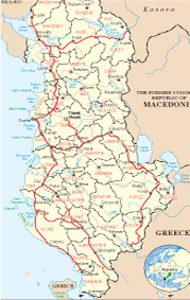




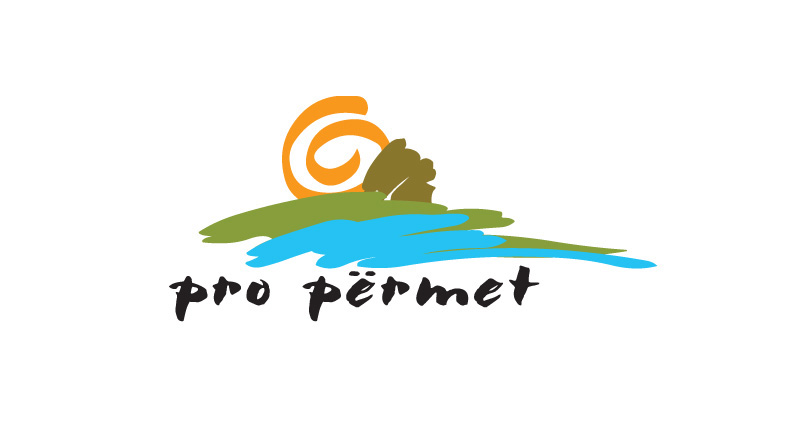
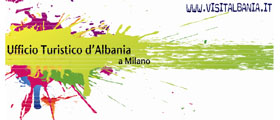
.jpg)
